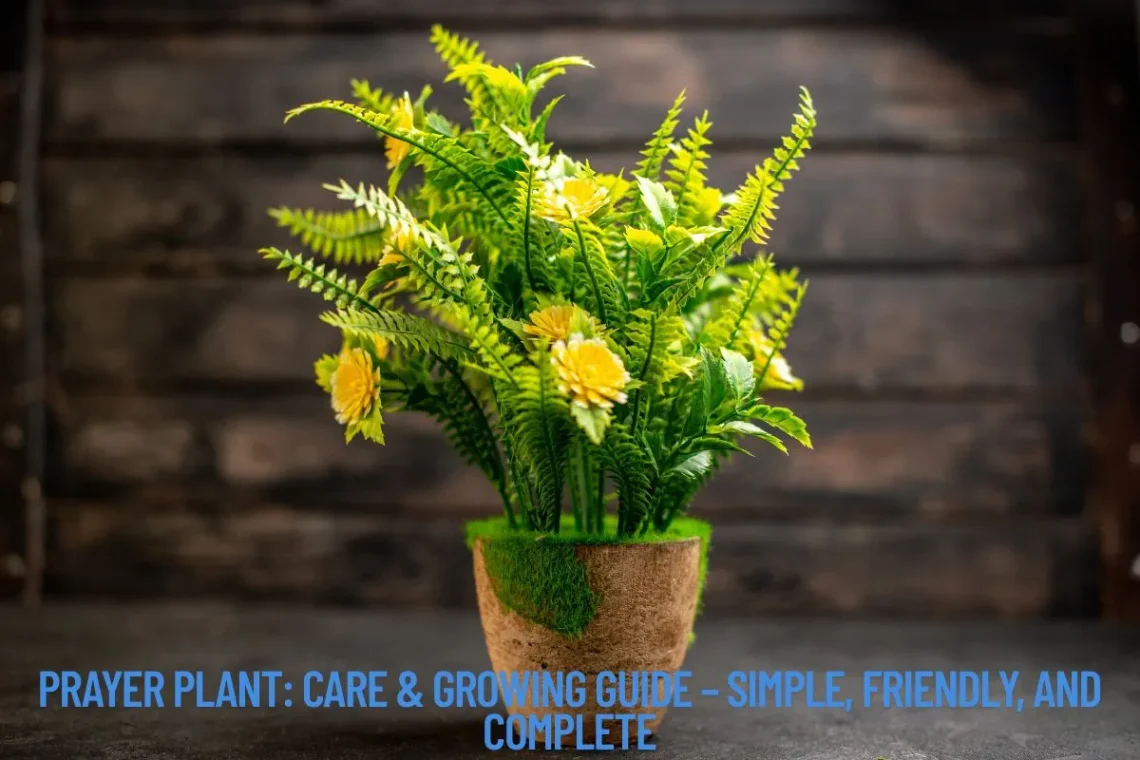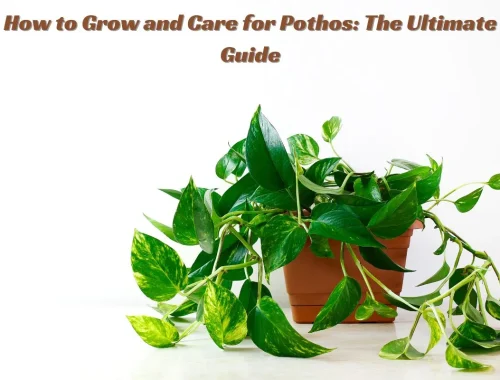
Prayer Plant: Care & Growing Guide – Simple, Friendly, and Complete
Are you looking for a houseplant that’s not just beautiful but also fascinating? Meet the prayer plant—a vibrant leafy wonder known for its dramatic “movement” and forgiving care needs. Whether you’re a new plant parent or a seasoned green thumb, the prayer plant (Maranta leuconeura) adds color, interest, and even conversation to your home. Let’s dive into everything you need to know about prayer plant care, with clear tips, stories, and insights for every level of plant lover.
Table of Contents
ToggleWhat Is a Prayer Plant?
The prayer plant is named for its eye-catching habit: its wide, patterned leaves lie flat by day but fold up at night, as though in prayer. Native to the Brazilian rainforest, it brings a lush and tropical vibe wherever it grows.
-
Scientific name: Maranta leuconeura
-
Common names: Prayer plant, Rabbit Tracks, Herringbone plant
-
Look: Broad, oval leaves in shades of green, with bold red, white, or yellow veins and lighter markings
Personal story: My first prayer plant was a gift from my grandmother. I placed it on my windowsill and was surprised when, in the evening, its leaves stood upright—as if waving hello! Every night, it’s a gentle reminder of both nature’s magic and my grandma’s kindness.
Is the Prayer Plant Good for the Home?
Absolutely! Prayer plants aren’t just pretty; they’re great companions for almost any home. Here’s why:
-
Air Purification: Like many houseplants, prayer plants help clean the air by filtering toxins, making your space fresher and healthier.
-
Non-Toxic: They’re safe for both pets and kids, so you can enjoy their beauty worry-free.
-
Mood Booster: Their lively patterns and leaf movements add a touch of the rainforest—even in city apartments. Many people find watching their leaves fold and unfold relaxing.
-
Easy-Going: Prayer plants forgive the occasional missed watering or imperfect spot—perfect for busy or forgetful plant lovers.
Unique insight: I’ve found that having a prayer plant on my work desk helps break the “screen stare”—the gentle leaf movements remind me to pause, stretch, and breathe.
Where Is the Best Place to Put a Prayer Plant?
Getting the location right will help your prayer plant thrive. Here’s a simple guide:
1. Indirect, Bright Light
-
Ideal: Place your prayer plant near a window that gets filtered, indirect sun—think of sheer curtains or a spot a few feet from a sunny window.
-
Why: Too much direct sun can scorch and bleach the leaves; too little light and colors may fade.
-
Fluorescent lights work too! That’s why prayer plants do well in offices or dorms with minimal sunlight.
Story: I once put my prayer plant right on a south-facing windowsill, and the leaves turned pale and crispy. Lesson learned! Now mine sits near a bright but shaded spot, and it’s full of vibrant patterns again.
2. Warmth and Humidity Matter
-
Temperature: 18–27°C (65–80°F) is perfect. Avoid chilly drafts or sudden cold snaps.
-
Humidity: Higher is better! Bathrooms, kitchens, or placing the pot on a tray of water and pebbles can help.
-
Avoid heaters and AC vents—dry air can make leaf tips turn brown.
How to Tell If a Prayer Plant Is Happy
A happy prayer plant lets you know in simple ways:
-
Bright, bold leaves: Strong color patterns and no dry, crispy spots.
-
Steady leaf movement: Leaves sit flat during the day and fold up at night.
-
New Growth: Look for new “rolls” or baby leaves at the plant’s base.
-
No drooping: Leaves stand tall, not limp or sagging.
If the plant’s leaves are rolling tightly, losing color, or showing brown edges, it’s signaling for help—usually for more humidity, less harsh sun, or a drink of water.
Personal anecdote: When my prayer plant’s leaves started getting brown tips, I started misting it with water each morning. In just a week, it perked up and began sprouting new leaves!
Why Do Prayer Plants Move at Night?
This is one of the most delightful features of the prayer plant. Here’s the science, simply explained:
-
Nyctinasty: This fancy word describes how prayer plant leaves open flat in sunlight for maximum light, then fold up in darkness to conserve moisture and maybe protect themselves from nighttime pests or dew.
-
Special joints: At the base of each leaf, there’s a “pulvinus,” a sort of joint that changes shape as moisture shifts inside. This makes the leaf “pray” at night and stretch out again come morning.
Watching these subtle movements is like seeing your plant dance—the perfect low-key companion in any room!
Prayer Plant Care Guide: Step-by-Step Success
Follow these core steps to keep your Maranta happy and healthy.
1. Light
-
Bright, indirect light is best
-
Avoid direct sun and deep shade
2. Water
-
Keep soil consistently slightly moist, not soggy
-
Water when the top inch feels dry, usually every 7–10 days
-
Use lukewarm water (cold water can shock roots)
-
Don’t let soil dry out completely
3. Humidity
-
Prayer plants love humidity! Mist leaves, use a pebble tray, or run a small humidifier if your home is dry.
-
In winter, humidity is extra important because heaters dry out the air.
4. Temperature
-
18–27°C (65–80°F) is ideal
-
Keep away from cold spots and drafts
5. Soil & Repotting
-
Well-draining potting mix (a blend for African violets works well)
-
Repot every 2 years or when roots fill the pot
-
Good drainage prevents root rot
6. Feeding
-
Fertilize once a month during the growing season (spring and summer) with a weak liquid fertilizer.
-
Skip or halve the dosage during fall and winter.
7. Cleaning
-
Wipe leaves with a soft, damp cloth every few weeks to keep them glossy and dust-free.
Unique tip: If you see a yellow, shriveled leaf, don’t panic. Prayer plants drop the odd old leaf—gently snip them off to encourage new growth.
Common Problems—and How to Solve Them
Brown Leaf Tips
-
Usually from dry air. Mist more often or use a pebble tray.
Wilted, Drooping Leaves
-
It can mean too little water or too much water (check soil).
-
Also, check for root rot—make sure your pot drains.
Leaf Curling Up
-
Not enough humidity, or the plant is too hot/cold.
Leaves Losing Color
-
Too little light—move the plant closer to filtered daylight.
Personal insight: I tend to underwater in winter, so a simple trick I use is keeping a small watering can near the plant. When I see the can, I remember to check if it’s thirsty.
Prayer Plant Propagation: How to Share the Love
Want more prayer plants? Here’s how:
-
Water propagation: Cut a healthy stem with at least one node (joint). Place it in a glass of clean water. In a few weeks, roots will sprout—then move to soil.
-
Division: When you repot, gently separate plant clumps with roots and replant each in its pot.
This is a great way to share prayer plants with friends or family—each new plant is a living reminder of you!
Answers to Common Prayer Plant Questions
Is the Prayer Plant Good for the Home?
Yes! It’s safe, purifies air, and adds color and movement.
Where Should I Put My Prayer Plant?
In bright, indirect light—like a north or east window, or anywhere out of direct sun.
How to Tell If a Prayer Plant Is Happy?
Upright, strong leaves with color, steady movement, and new growth.
Why Do Prayer Plants Move at Night?
They “pray” at night to protect themselves and adapt to changing light—thanks to special moisture-filled joints.
Quick-Reference Table: Prayer Plant Care
| Need | Prayer Plant Likes | Prayer Plant Dislikes |
|---|---|---|
| Light | Bright, indirect, gentle | Hot sun, deep shade |
| Water | Evenly moist, not soggy or dry | Letting soil fully dry or drown |
| Humidity | High mist often, a pebble tray works | Dry air, near heaters |
| Food | Monthly, weak fertilizer | Overfertilizing |
| Perks | Air-cleansing, pet-safe, Instagram-friendly! | N/A |
Final Thoughts: Let Your Prayer Plant Brighten Your Home
Prayer plants are more than just another plant—they’re a living showpiece that moves, grows, and “prays” along with the sun. They don’t just fit into your home décor—they become part of your daily life.
From the first time you see those leaves fold up at dusk, you’ll be hooked—not just on the look, but on the gentle, mindful moments they inspire. Whether on a bookshelf, bathroom window, or classroom desk, the prayer plant fills the space with nature, positivity, and a dose of wonder.
Personal note to new plant owners: Don’t stress if you make a few mistakes—prayer plants are very forgiving. Adjust, watch, and enjoy their quiet dance, day and night. You’ll soon find they bring joy, calm, and a little magic wherever they grow.
Happy growing! Your prayer plant will always be there, gently reminding you: even small changes can be truly beautiful.
You May Also Like

Stylish Kitchen Cabinet Trim Ideas That Instantly Elevate Your Space
October 12, 2025
How to Grow and Care for Pothos: The Ultimate Guide
June 30, 2025

